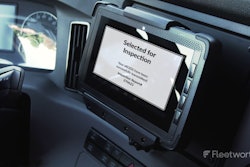 Don’t forget that negotiations with a dealer can include matters other than price, such as repairs and future service work.
Don’t forget that negotiations with a dealer can include matters other than price, such as repairs and future service work.Your next truck could generate close to $1 million in revenue – possibly much more. So it’s worth taking plenty of time to make the right choice. Here find advice for choosing a used truck.
NARROW YOUR LIST. In addition to checking local dealerships, try a Google search and other online resources. Once you have found three to five trucks that meet your key requirements, run a VIN check through an online service. RigDig.com, for example, provides ownership history, insurance claims, accidents, mileage history and more. When you find a clear reason not to buy a certain truck, move to the next one.
EVALUATE FOR FUEL EFFICIENCY AND APPLICATION. Nine out of 10 used trucks were not spec’d for optimal fuel mileage, so dig deep to find one matched to your application. Keep in mind body style, engine, transmission, rear-end ratio, tire sizes, weight, accessories, auxiliary power unit or other idle reduction technology, mileage, sleeper size and your type of freight and regions of haul.
RESEARCH IN DEPTH. Call the dealer and get as much information as possible: maintenance history, full ECM reports, pictures – even video. If a dealer says he doesn’t have this information or otherwise puts you off, move on. Find out what operation the truck was used in, whether it’s been parked for extended periods of time and what preventive maintenance has been done. If the truck came from a large fleet, chances are its maintenance records are available.

SCHEDULE INSPECTIONS. It’s ideal to get these three inspections, preferably by shops other than the selling dealer:
- Engine inspection by an original equipment manufacturer dealer. This should include tests for dyno, engine blow-by, oil analysis and charge air cooler, as well as an evaluation as to whether the engine’s condition is reasonable for its mileage.
- Front-end inspection. This provides a good indication of how well the truck has been maintained.
- Finally, a bumper-to-mudflap inspection by a well-qualified mechanic. Ask for his opinion on the truck overall, including the condition of all major systems.









